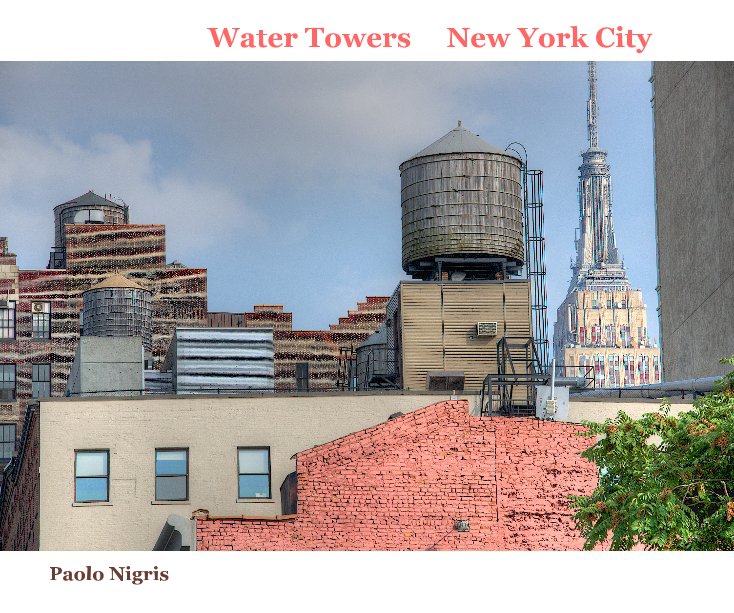Water Towers New York City
von Paolo Nigris
Dies ist der Preis, den Ihre Kunden sehen. Listenpreis bearbeiten
Über das Buch
This collection of photographs of the water towers of New York City are not only a tribute to these iconic structures of the city’s landscape, but also a pretext to explore hidden details of its architecture. Rooftop water towers are an unique opportunity to experiment with shapes, forms and textures, a frequent component of my photographic quest. Inspired by famous paintings like Edward Hopper’s “Rooftop” (1926), and by the ever changing architectural scene, I focused my attention on the cylindrical wooded structures and framed them with the surrounding buildings. This a is a collection of many years of walking the streets of New York with my camera.
Water is our most precious natural resource. New York City’s skyline is dotted with wooden water towers, the result of a 19th century’s law requiring all buildings taller than six stories to be equipped with a rooftop water tank. This was necessary to prevent the need for excessively high pressures at lower elevations, which could burst pipes. Pressure in the city’s pipes can take water up only about half a dozen stories, so a higher building needs either a pumping system or a system of tanks. A water tower seemed like the better solution, since it also provides emergency storage for fire protection. A water tower store 25,000 to 50,000 liters of water until it is needed in the building below. The upper portion of water is skimmed off the top for everyday use while the water in the bottom of the tower is held in reserve to fight fire. When the water drops below a certain level, a pressure switch, level switch or float valve activate a pump or open a public water line to refill the water tower. Even today, no sealant is used to hold the water in. The wooden walls are held together with cables but leak through the gaps when first filled. As the water saturates, the wood swells, the gaps close and the tank become impermeable.
Water is our most precious natural resource. New York City’s skyline is dotted with wooden water towers, the result of a 19th century’s law requiring all buildings taller than six stories to be equipped with a rooftop water tank. This was necessary to prevent the need for excessively high pressures at lower elevations, which could burst pipes. Pressure in the city’s pipes can take water up only about half a dozen stories, so a higher building needs either a pumping system or a system of tanks. A water tower seemed like the better solution, since it also provides emergency storage for fire protection. A water tower store 25,000 to 50,000 liters of water until it is needed in the building below. The upper portion of water is skimmed off the top for everyday use while the water in the bottom of the tower is held in reserve to fight fire. When the water drops below a certain level, a pressure switch, level switch or float valve activate a pump or open a public water line to refill the water tower. Even today, no sealant is used to hold the water in. The wooden walls are held together with cables but leak through the gaps when first filled. As the water saturates, the wood swells, the gaps close and the tank become impermeable.
Eigenschaften und Details
- Hauptkategorie: Architektur
-
Projektoption: Standard-Querformat, 25×20 cm
Seitenanzahl: 172 -
ISBN
- Softcover: 9781320271608
- Veröffentlichungsdatum: Nov. 16, 2013
- Sprache English
- Schlüsselwörter water Towers, New York City, New York, NYC
Mehr anzeigen


